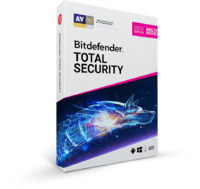I will try and post a primer in a seperate thread. It's clear that members do not recognise the fact that a movie is just like a slide show. It's a series of seperate frames assembled in a digital frame store and then instantly sent to a display with a transistor for each pixel matched to the frame store. Each pixel has 3 sub pixels. One each of red green and blue (as the on screen pixels are square the sub pixels are rectangular). Transmissions in the UK are invariably 25 frames/second.
Because of this the frame store must have a 1:1 relationship with the display.
Try the free link to the Kizoa site after organising your files into a single folder. Assuming your photos are landscape and you have Full-HD TV choose landscape 16:9 and output to .mpp4. As you have not posted what your TV can display how can anyone know what is the best format for your TV ?
Send any video information that does not have this relationship, The display has to rescale the video (scaling down is easy, scaling up is hard).
EG Good quality SD at 720 x 576 looks reasonable on a 1920 x 1080 TV with a high quality scaler, 544 x 576 is blurry vision.
Send 544 x 576 to a 4K TV it will look horrible. Decent bitrate Full-HD scaled up to 4K will be better. Get close to the screen the scaling artefacts will be very visible.
Moral is for the best possible picture send the native screen resolution to the display (Usually a TV).
The TV has to do this in real time. A PC can do this by pre-analysing the contents (usually in two passes). This allows the use of a variable bitrate. The portions of the video that have rapid video use a higher bitrate. The ones with little movement use less. A static image can be transmitted at the lowest bitrate. The higher the bitrate the larger the final file.
A slide show where one image instantly replaces the previous one can use the lowest bitrates (In movie terms a straight cut). This is the most common way of switching in a movie to the next footage.
Watch a movie carefully by far the majority when switching from one camera (or jpeg image) take to another use straight cuts. Using straight cuts you should not let a moving object cross the line of sight of the camera. If you do the moving object instantly changes direction.
There are hundreds of way's of switching from one video sequence (or the next jpeg image). Slide show software can provide lots of ways to replace one slide with another. Down to you to find the best transition.
A very common technique is to us a lap dissolve - A lap dissolve gradually replaces the pixels from the first image or video sequence with the next. Very simple to do with digital video. Much harder with film cameras, though the
In movies and slide shows this is most often used to indicate a period of elapsed time between the two shots.
Next common technique is to combine two lap dissolves to provide a linking shot.
Imagine a car chase that finishes with a close up of a car wheel, that lap dissolves into into a close up of a stagecoach wheel and then to a stagecoach travelling at high speed. You have a 21st century seamless swap to the last century.
There are countless other ways. Many of them can produce totally automated sequences and synchronise suitable music with the transitions in the video.
Try this out using the free software I linked to. Instead of boring your friends you might produce a masterpiece that impresses your friends and relations, and may even make you a you-tube star.
The media player on the 4000/5000T is rudimentary but it's really good quality given UK broadcast standard footage which after all is what the box is designed to use and the built in VP chip. Do not expect it to work well with download content from the internet especially 24Hz (24 fps) Blu-ray standard content.
Despite what others have said you will struggle to find a media player at any price that will play back 24fps content at the correct frame rate. Even my Blu-ray player which has to be 24Hz compliant will not. Symptoms are jerky motion on panning shots as the player pads the video footage with extra frames to maintain audio synch.
Netflix does a really good job (and my laptop) at presenting 24Hz content on a 50 Hz box. However on some shots you can easily see the jump. Some are more susceptible the effect than others,
None can match a blu-ray player connected to a 1080p24 capable TV video wise, and a HD audio capable AV receveir and speakers.
Audio wise Netflix comes closest to lossless-HD audio.
Simply using a file of jpeg images especially if they are greatly different to your TV native panel resolution is bound to cause issues.
Would you expect a Full-HD Tv to work with 4K video ? Equally it will not work with still images with a greater then 4K resolution. The TV and box is not designed to work with UHD.
Making them smaller is not difficult.
| Wed 14 Aug 2019 21:35:42
#12 |


